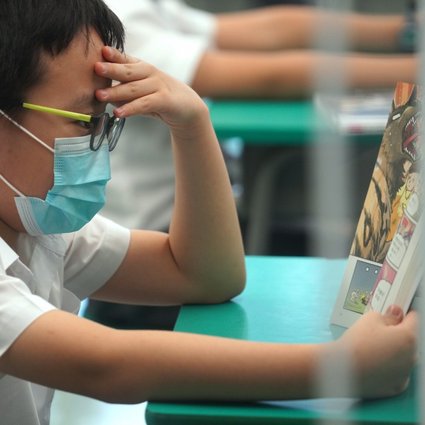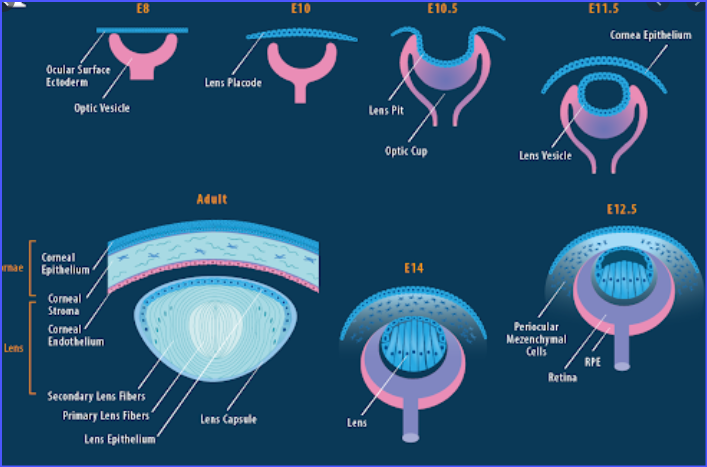There is no escaping screen time in today’s world, and the COVID-19 pandemic has seen children inside and undertaking screen based learning more than ever before. Not only are we using screens for education or work, but we are using them for recreation and family connection too. A 2011 study published in the Journal of Paediatrics suggested 47% of children were spending more than two hours a day on screen time for entertainment,1 and by 2019 that number had skyrocketed to 98% in the US.2
Science is still illuminating the exact nature of the link between screen time, near work and myopia – see the links below for more reading. It has been shown, though, that children who use screens for greater than three hours per day are almost four times more likely to be myopic compared to those spending one hour on screens per day.3 This detrimental impact appears to be highest in younger children – 6 to 7 year olds were five times more likely to be myopic if they had heavy screen use. This thankfully drops to 21% in the typically tech-heavy 12-13 year olds. So when parents ask “just how much screen time is too much” – what should you say?
The American Academy of Paediatrics4 and the Australian Government Department of Health5 have clear recommendations which we should encourage parents and children to follow. Below are screen time guidelines for children, along with links to resources to support these important clinical conversations.
| Children under 2 years of age | No screen time. Excessive screen time reduces language development and increases the likelihood of childhood obesity. |
| Children 2-5 years | Children who are toddlers and pre-schoolers should have a maximum of 1 hour of screen time a day. Higher rates of screen time are associated with less play, poorer social skills, slow language development and increased risk of obesity. |
| Children 5-17 years | Should be limited to 2 hours of recreational screen time per day. Children are now using screens more during their education, so limiting screen time during entertainment is important. When families pay attention to their media consumption and parents monitor their children’s digital access, the amount of screen time reduces along with positive improvements in sleep and school performance6 |
The clinical message on visual environment
Advice on screen time guidelines for children – within advice on the childhood visual environment – is an important part of every conversation about myopia. Parents can be understandably concerned about their children’s screen time and often ask for advice – or for help in sternly asking their tween or teen to put down the smartphone! The very first panel of our Managing Myopia Guidelines Infographics (free to download via this link) addresses this crucial topic. When it comes to healthy visual development, the ‘evil’ of screens may not be the screen itself – it may be more how closely it’s held and the duration of use. Shown below, there are three key ‘rules’ about the indoor visual environment which encapsulate the government guidance described above.
- Take regular breaks from reading – the 20/20 rule
- Don’t hold reading material or screens too close – the elbow rule
- Try to limit leisure screen time to two hours per day in school aged children – the two hour rule.

The ’20/20′ Rule
The American Academy of Ophthalmology recommends the 20-20-20 rule to avoid digital eye strain: every 20 minutes take a 20 second break to look at something at least 20 metres away.
First discussed in 1991 by Optometrist Dr Jeffrey Anshel in the book Visual Ergonomics in the Workplace,7 the 20-20-20 rule is a favourite of patients, media and practitioners alike as it is catchy and vision-themed in name and nature. There is no direct evidence as to the effectiveness of this as a tool to reduce myopia or eyestrain, however taking regular breaks from screen work is good for both the visual system and the body as a whole.8 Here’s what to tell parents.
THE 20/20 RULE is where you child aims to take a break from reading every 20 minutes, for 20 seconds. He or she should look across the room for that 20 seconds, to relax the focussing muscles in the eyes before recommencing reading or screen time. This can be managed as a break between book chapters, between Netflix episodes for tweens and teens, or timers set for younger children.
The ‘Elbow’ Rule
A study of almost 2000 Chinese children of Grade 7 age (mean 12.7 years) evaluated near work parameters and their association with myopia. They found that closer working distance (less than 25cm), time spent in continuous reading (more than 45 minutes) and other factors like illumination and head tilt were associated with myopia.9
Increasing accommodative demand with excessively close working distance can be particularly challenging for myopes, where the frequency of insufficient accommodative responses has been linked to development and progression of myopia. Read more about the scientific basis of this in our popular blog Measuring Near Lag of Accommodation.
A simple way to reinforce and remind children of keeping an appropriate working distance is the “Elbow Rule.” Place your palm or closed hand on your head: screens or paper shouldn’t be held any closer than the elbow. Effective, easy to remember and requires nothing fancier than an elbow! Here’s what to tell parents.
THE ELBOW RULE is where your child should try to keep an elbow-to-hand distance between anything they are viewing up close, and their eyes. Try it yourself, and show them at home – make a fist, put it next to your eyes, and where your elbow sits is the closest any screen or book should get to your eyes when reading.
The ‘Two Hour’ Rule
The government recommended guidelines indicate that we should attempt to limit leisure screen time – that enjoyed after school hours and school work is completed – to less than two hours per day for school aged children. Here’s what to tell parents.
THE TWO HOUR RULE means we try to limit leisure screen time – when used for entertainment, outside of school work – to less than two hours per day.





Recent Comments